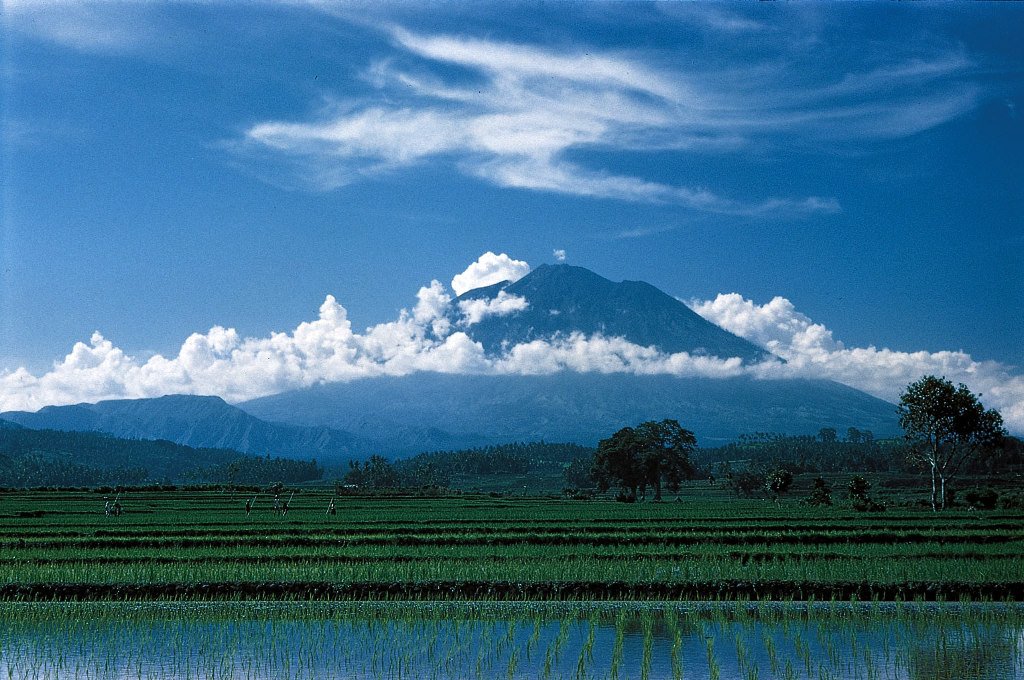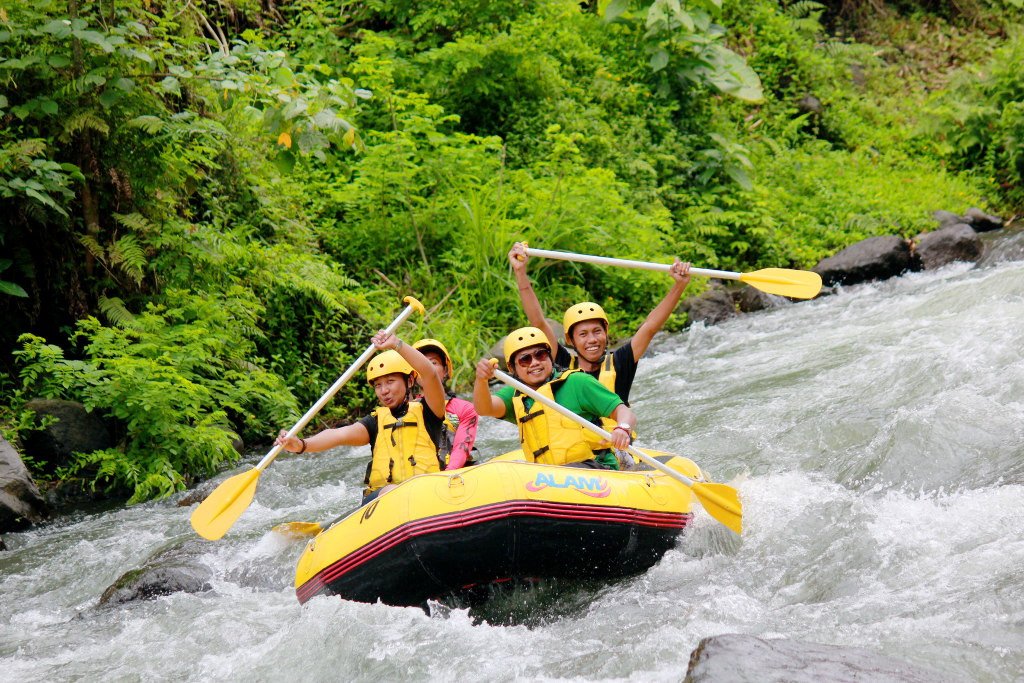The Indonesian archipelago attracts tourists and travelers year-round. Judging by the plethora of photos from this region, one might think that all the activities here are limited to beach sands and gallons of piña colada, but this is not true. Bali, considered one of the most popular paradise spots in the world, offers its visitors a wide range of active leisure activities and enlightening journeys into the local culture.
Beach Vacation

Since Bali earned its reputation as a paradise spot largely due to its numerous oceanic beaches that stretch across all the island’s shores, this is where we’ll start our parade of Indonesian entertainments. Some beaches on the island are well-developed for tourists, including Balangan, Padang-Padang, and Bingin, but many small and medium sandy slopes remain wild and are hidden from curious travelers by rocky cliffs.

Beach vacations include not only slow sunbathing but also daily evening bashes, which take place in hundreds (without exaggeration) of bars and guesthouses along the coast. In some cases, bonfires are lit right on the sand, and the parties turn into something resembling ritual dances.
Surfing

This type of active recreation is considered the main one on Bali, confirmed by the number of its enthusiasts who flock here year-round and scatter across numerous spots around the island. Of course, Kuta serves as the surfing base for most enthusiasts. Here you can find a fun company, experienced instructors, and even enroll in a surfing school, but seasoned travelers consider the cliff at Uluwatu the place for “real” surfing.

Since its development in the 1970s, much has changed – the beach is no longer wild, the descent to the waves is dotted with numerous shops and cafes, and there are always 10-20 people in the water. However, none of this spoils the huge and smooth waves that rise from the ocean at the shore.
Besides surfing, you can visit the Pura Luhur Uluwatu temple on the cliff, where various traditional events and rituals are constantly held, and enjoy a drink and dinner at the popular Single Fin bar with a view of the equatorial ocean sunset.
Diving/Snorkeling

Tropical latitudes create the best conditions for coral reefs to form. Colorful underwater forests surround Bali on all sides, so one of the most popular activities for travelers here is scuba diving. Experienced guides help those who are trying it for the first time and accompany experienced divers.

For those who are hesitant to go deep, there’s a simpler way to enjoy the bright diversity of coral thickets and their inhabitants – just get a snorkel and a pair of fins. Besides passive observation on the reefs, you can take a net or a harpoon and do some fishing. However, in most cases, you’ll have to release the catch.
Ethnotourism

An important part of any trip is not only active recreation and methodical wallowing in the sands but also getting to know the culture of the host people. If you share this point of view, be sure to visit Ubud – a town in the central part of the island, considered the cultural capital of the resort. In addition to numerous temples, there is a sacred forest inhabited by monkeys, several museums dedicated to Bali’s history, and a daily parade of thousands of white egrets in the village of Petulu.
Getting closer to the ethnic roots of the island’s indigenous people is also facilitated by participating in dance rituals like Kecak, Barong, or Calonarang. These are large-scale costume performances that reveal the full beauty and musical art of the Indonesian people.
Natural Parks

In terms of places where you can immerse yourself in the island’s flora and fauna, both local and specially brought in for tourists’ entertainment, Bali is no less than much larger countries. The largest reserve is the Garuda Wisnu Kencana park. It sprawls over 250 hectares and combines all the diversity of Indonesian nature with an open theater, exhibition halls, and numerous cafes and restaurants. The park is open to visitors from 8 AM to 8 PM.

Bali also has its own zoo, a butterfly park, and a reserve with hundreds of species of birds and reptiles. An exciting adventure can be a visit to the Bali Safari & Marine Park, where tourists are put on a bus for a real safari through the reserve.
Rock Climbing

The island has several canyons with sheer rock walls that are perfect for extreme rock climbing enthusiasts. A special type of active recreation – canyoning – is also widely practiced here. The goal is to descend a rocky gorge without using swimming devices. This task involves swimming, sliding down the walls, jumping from great heights, and using all kinds of climbing equipment on some steep sections.
Bali has three popular canyons where you can test your skills under professional supervision. The first two – Kalimudah and Kerenkali – are suitable for almost everyone, while the third – Kerenkali – is for experienced climbers.
Hiking

There is plenty to keep you busy on the island for those who can’t sit still and want to explore the natural beauty of the region on foot. For eco-tourism on Bali, there are three most interesting objects. The small Gili Islands, located a few minutes’ sail from the Lombok shore, become a real find for those tired of the hustle and bustle of the big island, cars, and crowds of tourists. Here, you’ll find only beaches, forests, bars, and guesthouses. In the evening, you can have a blast, and in the morning, head to a remote wild shore for the whole day.

Climbing the slopes of the Batur and Agung volcanoes offers stunning views of the islands and the ocean. There are treks of varying difficulty and length, but finding a guide who won’t let you get lost is no problem. Visiting the mangrove forests leaves no one indifferent, as this form of vegetation is stunningly beautiful. Wooden walkways are laid through mangrove parks, and you can book a tour at the Information Center between Kuta and Sanur.
Rafting

Bali has several rivers suitable for rafting on inflatable boats and rafts. A simpler option for beginners and those not entirely confident in their abilities are the Ayung (near Ubud in the central part of the island) and Melangit rivers, where rafting starts in Klungkung. These have relatively small rapids of 2 and 3 difficulty categories, with routes of 7 and 12 kilometers downstream, respectively. The rivers are lined with picturesque forests and many unique geomorphological structures, so the vacation will be both active and beautiful.

For more experienced rafting enthusiasts, the Telaga Waja river is suitable, with rapids reaching 4 difficulty categories. The large number of rapids and whirlpools on the 16-kilometer route will make you work the paddles hard, but this adrenaline rush is exactly what participants in categorized rafting seek. The surrounding scenery is no less picturesque than the previous two, but you’ll often be too busy to enjoy the passing beauty.
As you can see, a vacation on Bali is not limited to the oceanic coastline, and even the most discerning travelers can find something to their liking. However, when choosing extreme descents into gorges and climbing the island’s volcanoes, remember your safety and be cautious.

